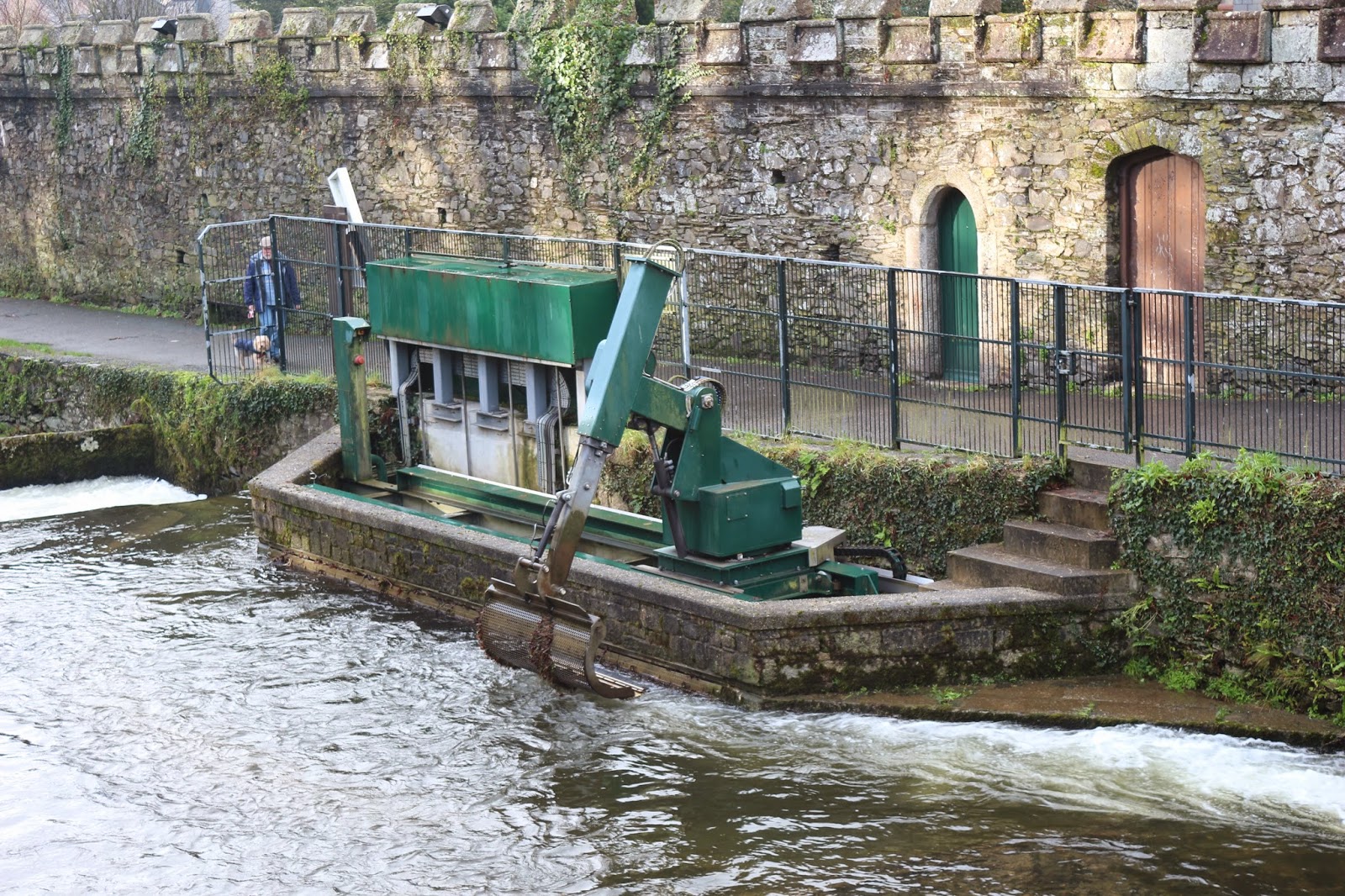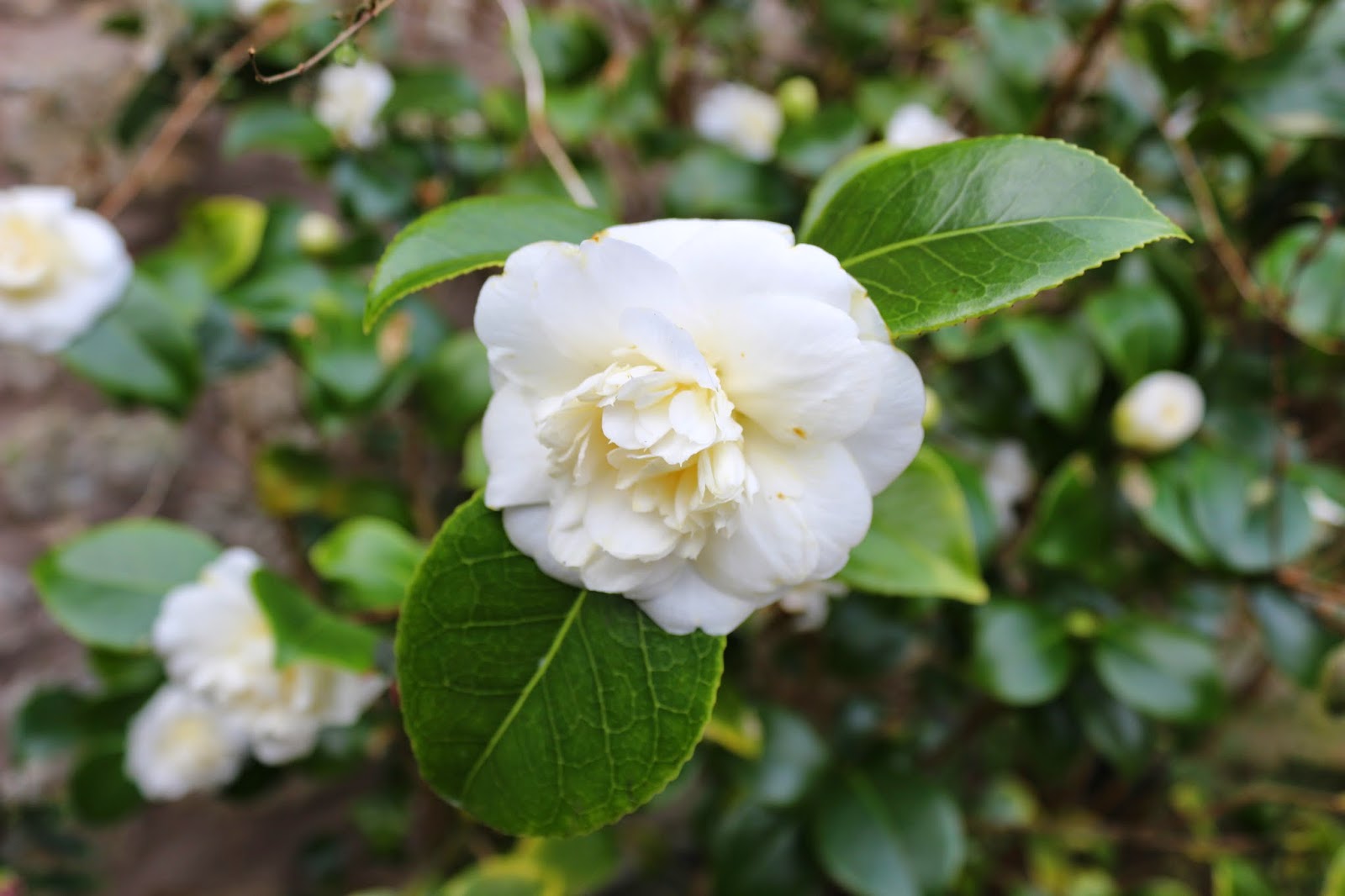It is a truth universally acknowledged that a grand-daughter should be very wary of what her grandparents tell her. Certainly, she should never believe that the heated front seat of their car gets hot enough to cook bacon and eggs on.
Will we ever be forgiven for saying that it does? Or for providing proof? My word, how we laughed. Gotcha! Oh dear, are we entering our second childhoods?
Quid me anxius sum? (Alfred E Neuman, Mad Magazine circa 1956). Facio, ita.
Thursday 29 January 2015
Sunday 25 January 2015
Wonwell Beach
Yesterday's walk was along the Inny, about 5 miles from its source. Today we went for a short walk at the other end of the river system - along the estuary beach at Wonwell in South Devon. Admittedly not the Inny estuary (there isn't one as it flows into the Tamar and thence to Plymouth Sound) but that of the River Erme. The Erme arises on Dartmoor and we'll be walking near its origin next week, so more of it then. Although we've been there many moons ago, or so we think, Wonwell came as a surprise. At the end of many miles of very narrow high-banked Devon lanes, we came to this expanse of sands. Was it really like that before? Of course, it must have been: perhaps we were thinking of somewhere else?
 |
| Looking upstream towards the valleys through which the Erme flows. At some point up there, the river becomes a ria. But where? |
 |
| Continuing my catalogue of less-than-adequate photographs of birds: a lone oystercatcher poking around the sand for shellfish. |
 |
| And another one: wigeon. Lots of these rooting around patches of vegetation. they don't go for shellfish but love a bit of grass or algae. |
 |
| And off they flew. |
Saturday 24 January 2015
A walk along the Inny
A nice sunny Saturday and I took myself off for a walk along the Inny river downstream to where it joined the Tamar, at Innyfoot. I thought I stood a chance of seeing a kingfisher or two or, perhaps, a dipper. And did I?
 |
| Blue indicates the out and back 3 mile route from Bealsmill to Innyfoot. It's about 2 miles from home (the flag). |
 |
| And this is where I just missed getting a good photograph of a kingfisher.. |
 |
| And here a dipper flitted off just as I pressed the shutter. |
 |
| In fact almost the only things that stayed still long enough for a photograph were these ferns |
 |
| And, of course, the church on the way back. |
Wednesday 21 January 2015
Six hundred up.
Would you believe this is post number 600 of my blog? I began it in early January 2010 and since then it's been a hotchpotch of, mmmm, stuff. A hotchpotch of .........
 |
| Birds.... |
 |
| And bees..... |
 |
| And a very nice tree. |
 |
| There have been books... |
 |
| Butterflies..... |
 |
| ...and a barbeque. |
Be warned, I'm not done yet.
Monday 19 January 2015
The sad case of Raif Badawi
The fate of Raif Badawi is getting wide coverage in the media and deservedly so. To remind you: he was arrested in June 2012 and sentenced to seven years in prison and 600 lashes by a Saudi Arabian court. However, an appeals court later overturned the sentence, ordered a retrial and handed down a 10-year prison sentence and 1,000 lashes spread over 20 weeks, along with a fine of about $260,000. He has had the first 50 lashes and, luckily, the second set has been postponed pending the deliberations of another court. This is probably due to the international uproar over his case rather than any humanitarian considerations, although it will undoubtedly be described as such. Do not be fooled, people.
And what are the heinous crimes that have warranted such barbaric treatment? Blogging about free speech, which attracted charges of 'insulting Islam and the government and apostasy'. Drawing any parallels between my blogging activities and his would be fatuous but it does bring home what we take for granted in this country. I can criticise and ridicule (and frequently do) as much as I like and the worse that happens is that I get the occasional adverse comment from a reader. Raif makes some relatively innocuous and nuanced comments (judging from what I've read of what he's written, I would not class him as a fervent radical) and the full weight of the state falls down upon him. Shame on Saudi Arabia: shame on our government for supporting such a cruel regime. Not in my name. Posh Dave, not in my name.
Friday 16 January 2015
What can be seen on a shopping trip to Tavistock
Today we went into Tavistock for a few bits and pieces. On the face of it, a pretty ordinary thing to do and without the Tavistock Factor it may very well have been. But Tavistock is not an ordinary place and this is what I saw whilst I strolled the 300 or 400 yards from the car park into the town centre.
 |
| And this fellow was a big surprise. A juvenile cormorant about 25 miles from the sea. He/she spent ages giving us all a display of expert wing-drying. |
 |
| By all accounts, it's been around for a few weeks and has its favourite rock where it can be seen most often. |
 |
| Much, much more common than the cormorant, a mallard pondering whether to take a dip or not. |
 |
| Acting on a predetermined schedule, the arm moves from its resting position and travels along a track so that the rake at the end of the arm comes up to the pipe leading to the grills........ |
 |
| The rake is drawn over the pipe entrance and then lifted out of the water... |
 |
| ..to move to the side and drop its contents downstream. |
 |
| Is this the worst bird photograph ever? But it reminds me that I spent a very enjoyable 10 minutes watching these two blue tits 'being playful'. Spring is in the air. |
Thursday 15 January 2015
The saga of Lee the Llama
Let me introduce you to Lee the Llama. Lee is a resident at a nearby farm and is a firm favourite with all who visit on Farm Open Days or who walk past his field on the 'Apple Way' Trail. He's a very cute camelid but he had a brush with bureaucracy recently which almost lead to his demise. Let me tell you the tale.
New official rules from Animal Health (APHA)
on testing ‘camelids’ (llamas, alpacas, vicunas et al) for bovine TB came into force last
autumn. A skin test on Lee just before last Christmas deemed him clear but a subsequent blood
test on New Year's Eve resulted in a ‘positive’, which was bad news for Lee. Our farmer friend, the owner of Lee, was told, very bluntly, that Lee had to be shot within 24 hours. Our farmer friend and his family were distraught and contacted the APHA laboratory to request that Lee be humanely euthanized rather than shot. At this stage, APHA senior vets
admitted to a mistake and said that a mandatory confirmatory second blood test had not been carried out. When it was done, it came up negative. Hooray for Lee and he lives to see
another day! His lady friend, Sophie the Welsh Black, was delighted. It could have turned out so differently if APHA's instructions had been followed straightaway.
Sunday 11 January 2015
Friday 9 January 2015
January at Poldhu Cove: Part 8 (Final)
The last day of our sojourn down west and we decided to walk the stretch that we didn't do yesterday. We took the bus from Porthleven to Praa Sands and then walked back. Simple, apart from the wind, ups and downs, sea spray and rain. But it was another great 5 mile walk with the pounding sea and crashing waves on our right all the way. At the end of it, we allowed ourselves a little triumphalism as it meant that we have walked the stretch of coast all around Lands' End and The Lizard, from St Ives to Helford Passage. Hooray for us for clocking up 40 miles this week.
 |
| Our customary start to a walk - nosh - this time overlooking the outer harbour at Porthleven. |
 |
| Pretty much the sort of view that accompanied us all the way. |
 |
| No, not Demelza but my IWC heading towards the waves. |
 |
| No, not something Demelza-related but a cross erected in memory of the many mariners drowned in the sea off this part of the coast. But that's not all... |
Thursday 8 January 2015
January at Poldhu Cove: Part 7
Abysmal overnight weather lead us to adopt Plan B for our walk today as we didn't think it would be a good idea to go too near any cliffs. Instead we drove to Marazion, caught a bus to Mousehole (pronounce Mowzel, not Mouse Hole or Muzzel) via Penzance and then walked back to our starting point. I'll admit that it was not a stretch of the Coastal Footpath that I was looking forward to completing as it is almost totally on tarmac and passes through the towns of Newlyn and Penzance. In the event, it was another delightful day - lots to see on the way and glorious weather. We clocked up just under 8 miles, which came as a pleasant surprise as we didn't think it would be quite that far. And, unlike our last walk, I managed to complete this one wearing my thermal tights the correct way around. Wearing them back-to-front was both uncomfortable and inconvenient!
 |
| And the walk started in a café on the harbourside at Mousehole. We needed to get our energy levels up before we got going. |
 |
| In the corner of the 'new' harbour lies the 'old' harbour, dating from the 1400s. It is still in use for landing fish apparently. |
 |
| The Scillonian III, the only ferry between the mainland and the Isles of Scilly. It has been nicknamed 'the great white stomach pump' which gives you an idea of how smooth the crossing generally is. |
 |
| I've mentioned the fate of HMS Warspite in a previous blog and it was pleasing to tie up the loose end of where exactly it was broken up. |
 |
| Looking quite fit after 7 miles. |
Subscribe to:
Posts (Atom)

























